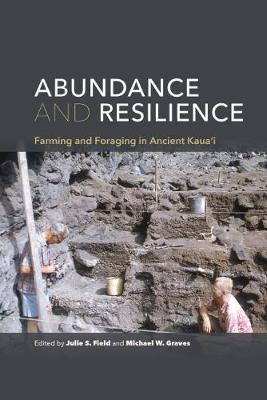
At the base of a steep cliff towering some 500 feet above the coast of the remote Na Pali district on the island of Kaua'i, lies the spectacular historical and archaeological site at Nu'alolo Kai. First excavated by Bishop Museum archaeologists between 1958 and 1964, the site contained the well-preserved remains of one of the largest and most diverse arrays of traditional and historic artifacts ever found in Hawai'i. The house sites that constitute the focus of Abundance and Resilience were built over five centuries of occupation and contained deeply buried, stratified deposits extending more than nine feet beneath the surface. The essays in this volume detail the work of archaeologists associated with the University of Hawai'i who have been compiling and studying the animal remains recovered from the excavations. The contributors discuss the range of foods eaten by Hawaiians, the ways in which particular species were captured and harvested, and how these practices might have evolved through changes in the climate and natural environment. Adding to this are analyses of a sophisticated material culture—how ancient Hawaiians fashioned animal remains into artifacts such as ornaments made of shell, pointed bird bone ""pickers,"" sea urchin and coral files and abraders, turtle shell combs, and bone handles for kahili (feathered standards) used by Hawaiian royalty. For researchers, Nu'alolo Kai opened up the world of everyday life of indigenous Hawaiians between AD 1400 and 1900. More importantly, we learn how their procurement and utilization of animals—wild marine organisms and birds, as well as domesticated dogs and pigs—affected local resources. Demonstrating that an increased preference for introduced animals, such as dogs and pigs, effectively limited negative impacts on wild animal resources, the essays in Abundance and Resilience collectively argue that the Hawaiian community of Nu'alolo Kai practiced a sustainable form of animal resource procurement and management for five centuries.
| ISBN: | 9780824875145 |
| Publication date: | 30th September 2017 |
| Author: | Julie S. Field |
| Publisher: | University of Hawai'i Press |
| Format: | Paperback |
| Pagination: | 288 pages |
| Genres: |
Archaeology by period / region Social and cultural anthropology |